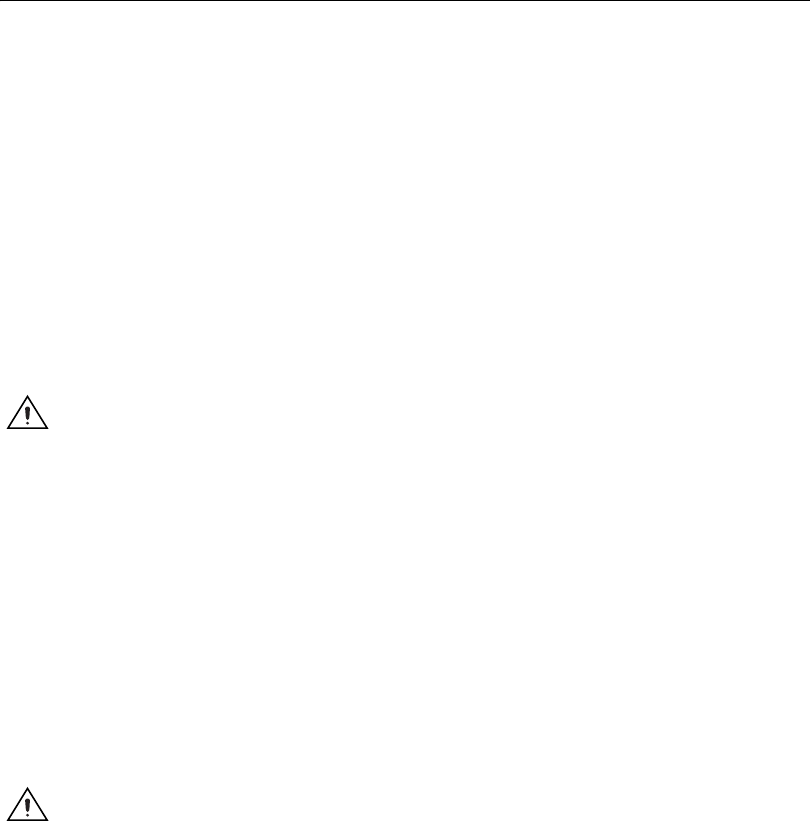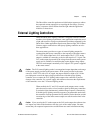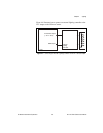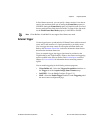
Chapter 4 Lighting
© National Instruments Corporation 4-7 NI 17xx Smart Camera User Manual
The Direct Drive controller performs an initialization sequence to achieve
the requested current output prior to acquiring the first image. You may
notice a sequence of short flashes from the light when the application
initializes or shuts down.
External Lighting Controllers
While the Direct Drive lighting controller is designed to handle common
machine vision lighting requirements, some applications require the use of
a light with current or voltage requirements beyond those supported by the
Direct Drive. Other applications require more than one light. All NI Smart
Cameras support connections to third-party lighting controllers to solve
these applications.
The smart camera provides two types of external lighting outputs for
synchronizing third-party controllers to the exposure of the smart camera:
a 5 V TTL strobe output and a 24 V strobe output. The 5 V TTL strobe
output is available for connecting to devices that require a 5 V signal. The
24 V strobe output is powered by the voltage from the smart camera power
supply and is available for controllers that require higher voltage inputs.
The 24 V strobe output is nominally a 24 V output if 24 V power is supplied
to the smart camera.
Caution The 24 V external lighting strobe is an unregulated output dependent on the range
of the power supply provided to the smart camera. If the power provided to the smart
camera is +20%/–15% with +5% AC ripple, the output could be as high as 30 V. If the
provided power exceeds the input voltage specifications of the third-party lighting
controller, do not connect the 24 V lighting strobe output to the controller to prevent
damage to the controller. Use a power supply with tolerances that meet the requirements
of the controller, or use the 5 V external lighting strobe.
When enabled, the 5 V and 24 V external strobe outputs create a strobe
pulse that can be used as a level-sensitive signal by third-party controllers
to strobe the light simultaneously with the image exposure. Alternatively,
if the third-party lighting controller supports a programmable strobe time,
the controller can be programmed for any arbitrary strobe duration, and the
assertion edge of the smart camera output can start the strobe timer in the
controller.
Caution If you are using the 5 V strobe output or the 24 V strobe output, the software does
not impose any limits on the duration or the duty cycle of the strobe output. You must
ensure that your requested exposure time and the frame rate result in duration and duty


















